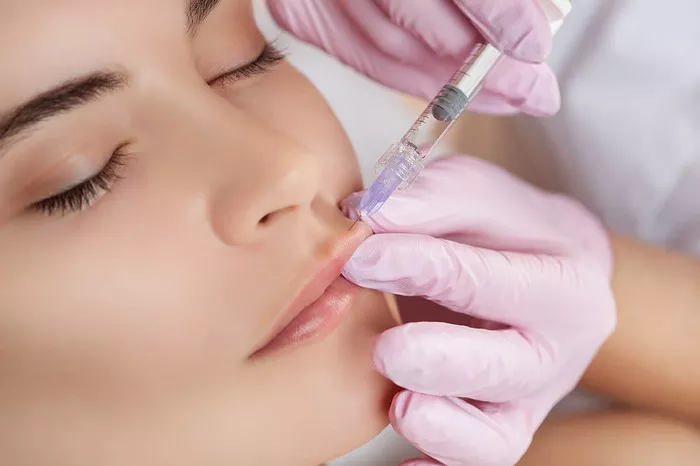Dermaplaning has gained popularity as an effective exfoliation and hair removal method for achieving smoother, more radiant skin. But when it comes to dermaplaning, many people wonder if it’s suitable for use on the upper lip, an area prone to unwanted hair growth and the development of fine lines. In this comprehensive guide, we will explore the practice of dermaplaning, its benefits, potential risks, and whether it’s a safe option for treating the upper lip area.
Understanding Dermaplaning
Dermaplaning is a non-invasive cosmetic procedure that involves the use of a sterile surgical scalpel to gently scrape away the top layer of dead skin cells and vellus hair (commonly known as “peach fuzz”) from the surface of the skin. This process is typically performed by licensed estheticians, dermatologists, or trained professionals in a controlled environment.
The primary objectives of dermaplaning include:
Exfoliation: Removing dead skin cells to reveal smoother, more youthful-looking skin.
Hair Removal: Eliminating fine facial hair to achieve a smoother, hair-free complexion.
Product Absorption: Enhancing the absorption of skincare products by allowing them to penetrate deeper into the skin.
Benefits of Dermaplaning
Dermaplaning offers several potential benefits for the skin:
Smoothing Effect: By exfoliating the skin’s surface, dermaplaning can improve skin texture, making it look and feel smoother.
Brighter Complexion: The removal of dead skin cells can reveal a brighter, more radiant complexion.
Enhanced Product Absorption: After dermaplaning, skincare products like serums and moisturizers can be absorbed more effectively, maximizing their benefits.
Temporary Hair Removal: Dermaplaning effectively removes fine facial hair, which can give the skin a softer appearance.
Reduced Appearance of Fine Lines: Some individuals find that dermaplaning minimizes the appearance of fine lines and wrinkles, although this effect is temporary.
Can You Dermaplane Your Upper Lip?
Dermaplaning is a versatile treatment, and it can be performed on various facial areas, including the upper lip. However, there are specific considerations to keep in mind when dermaplaning the upper lip:
Hair Type: Dermaplaning is most effective for removing fine vellus hair. If you have coarse or thick hair on your upper lip, other hair removal methods, such as waxing or threading, may be more suitable.
Professional Guidance: It’s crucial to have dermaplaning performed by a trained and licensed professional, particularly when treating sensitive areas like the upper lip. DIY dermaplaning in this area can pose a higher risk of injury.
Potential Irritation: The upper lip area can be sensitive, and dermaplaning may cause temporary redness or irritation. Ensure that you follow post-care instructions provided by your esthetician.
Avoid Active Skin Conditions: If you have active skin conditions, such as acne, cold sores, or open wounds on or around the upper lip, it’s best to postpone dermaplaning until your skin has healed.
Sun Protection: After dermaplaning, the skin is more susceptible to UV damage. Apply sunscreen with SPF 30 or higher to protect the treated area from the sun.
Maintenance: The results of dermaplaning on the upper lip are temporary, and hair will eventually regrow. Maintenance sessions may be necessary to maintain the desired smoothness.
Risks and Considerations
While dermaplaning is generally safe, there are some potential risks and considerations to be aware of:
Risk of Cuts or Nicks: The use of a scalpel blade carries a slight risk of cuts or nicks, especially in the hands of an inexperienced practitioner. This risk is heightened in delicate areas like the upper lip.
Infection: Improperly sanitized tools or unsterile environments can lead to infection. Ensure that your dermaplaning session is conducted in a clean, professional setting.
Post-Treatment Redness: Temporary redness and irritation are common after dermaplaning. This usually subsides within a day or two.
Ingrown Hairs: As hair regrows, some individuals may experience ingrown hairs. Proper post-treatment care and exfoliation can help minimize this issue.
Not Suitable for Active Acne: Dermaplaning is not recommended for individuals with active acne lesions, as it can exacerbate the condition and spread bacteria.
Conclusion
Dermaplaning is a versatile skincare treatment that can effectively address a variety of skin concerns, including the upper lip area. When performed by a trained professional, it can safely exfoliate the skin, remove fine facial hair, and enhance the overall appearance and texture of your complexion. If you’re considering dermaplaning for your upper lip, consult with a licensed esthetician or dermatologist to determine if it’s the right option for you and to ensure a safe and effective treatment experience.


